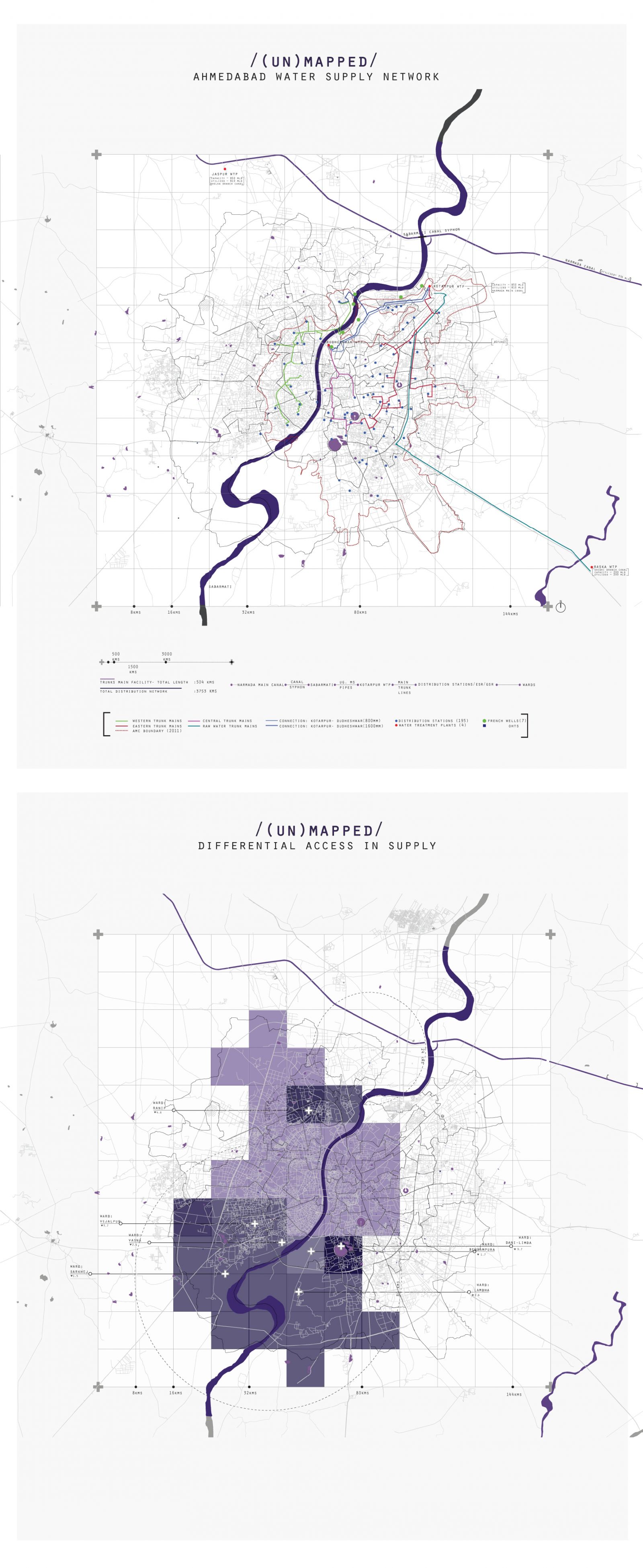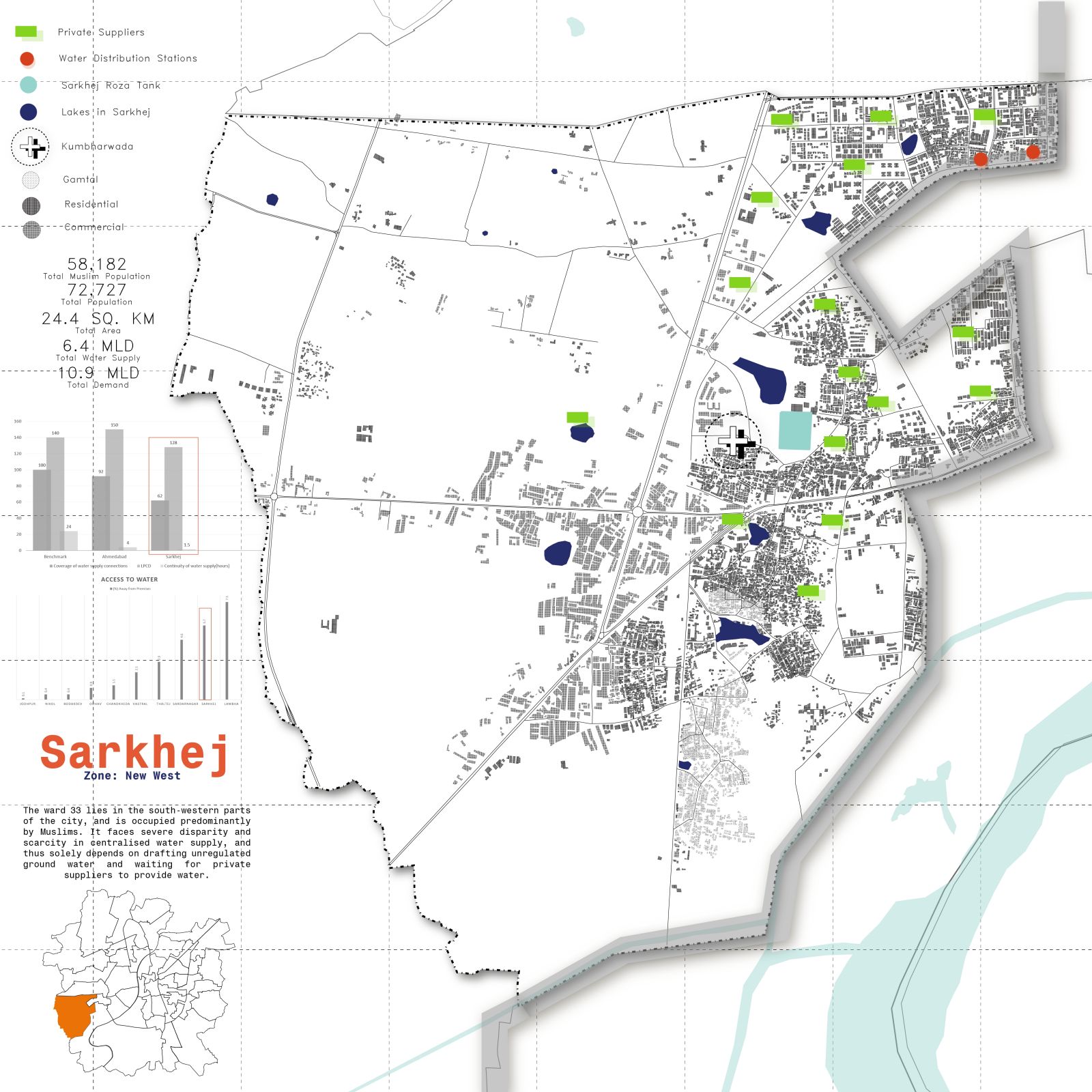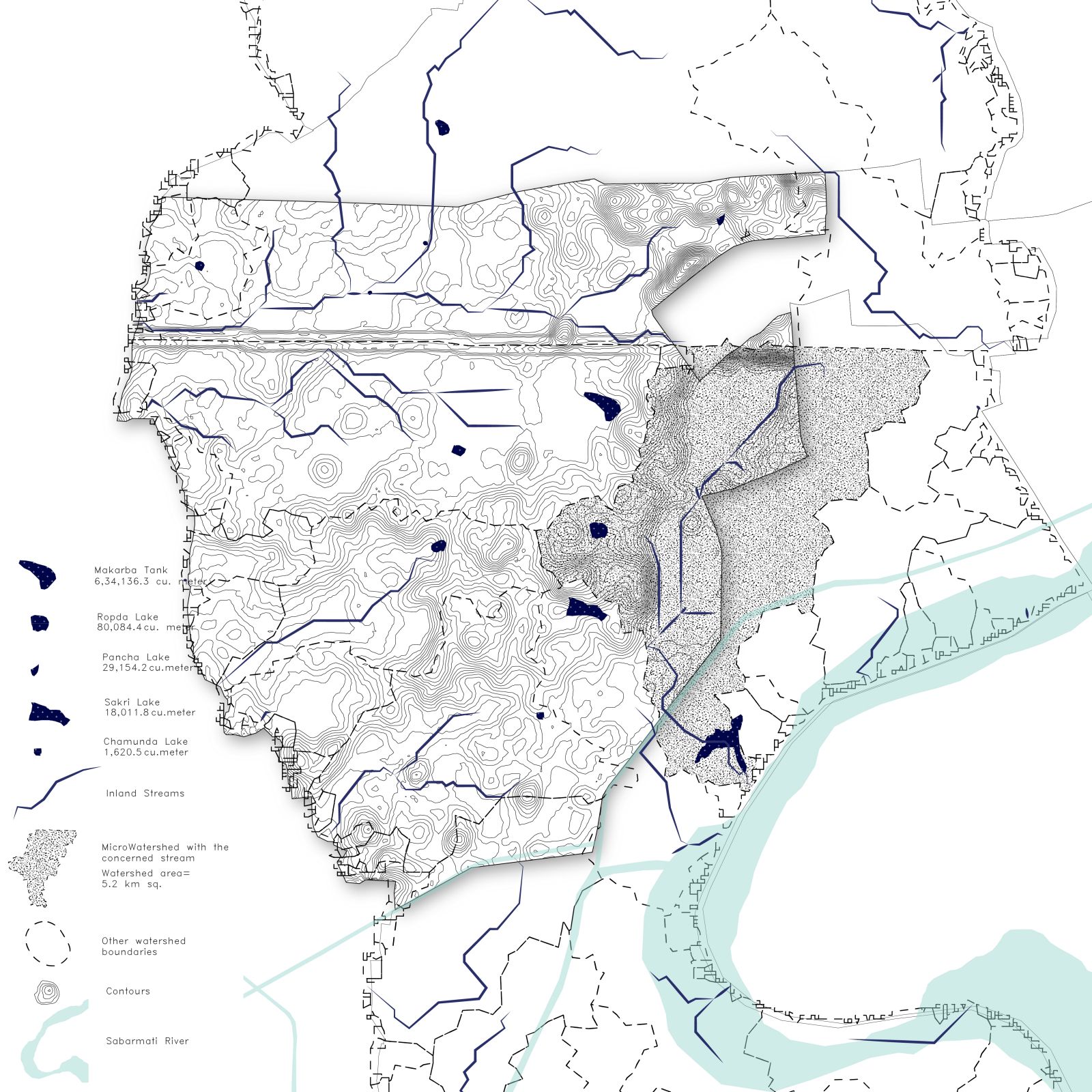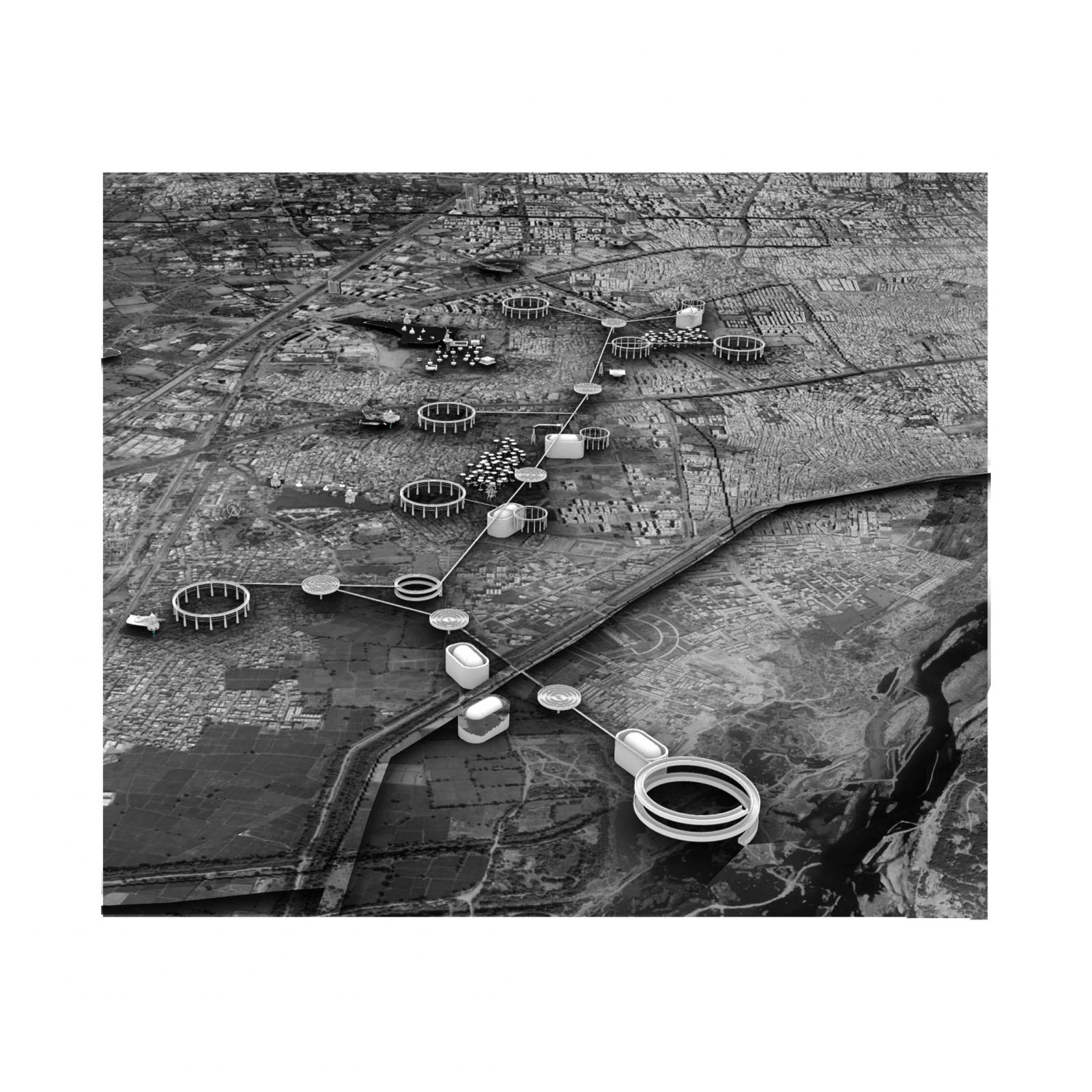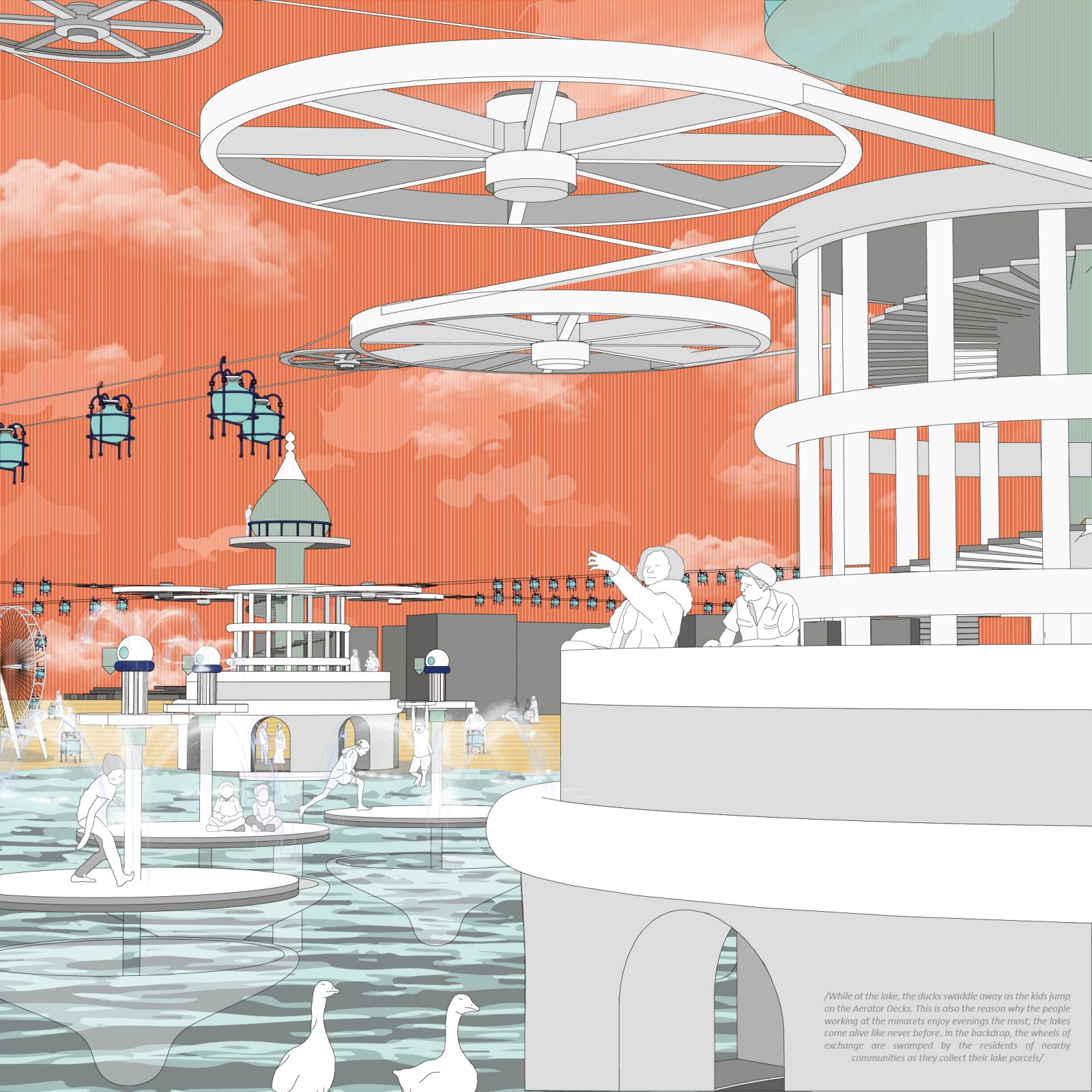Your browser is out-of-date!
For a richer surfing experience on our website, please update your browser. Update my browser now!
For a richer surfing experience on our website, please update your browser. Update my browser now!
The project ‘Re-claimed' is a proposition for a speculative vision that embraces a decentralized, mobilized, and independent toolkit of infrastructure using the key strategy of working within and reviving natural water landscapes to add moments of amplified activity.
Thus primarily being a re-imagination of infrastructures relating to water supply, management, and engagement for wards like Sarkhej which bear the brunt of biases and disparities.
Regional-scale mapping:-
InQuest of Water: The mapping focuses on unfolding the disparities through the lens of water supply infrastructure in the state of Gujarat. It primarily investigates the supply network that ranges from the Sardar Sarovar Dam which intends to provide drinking water and irrigation water schemes to the urban and rural population

